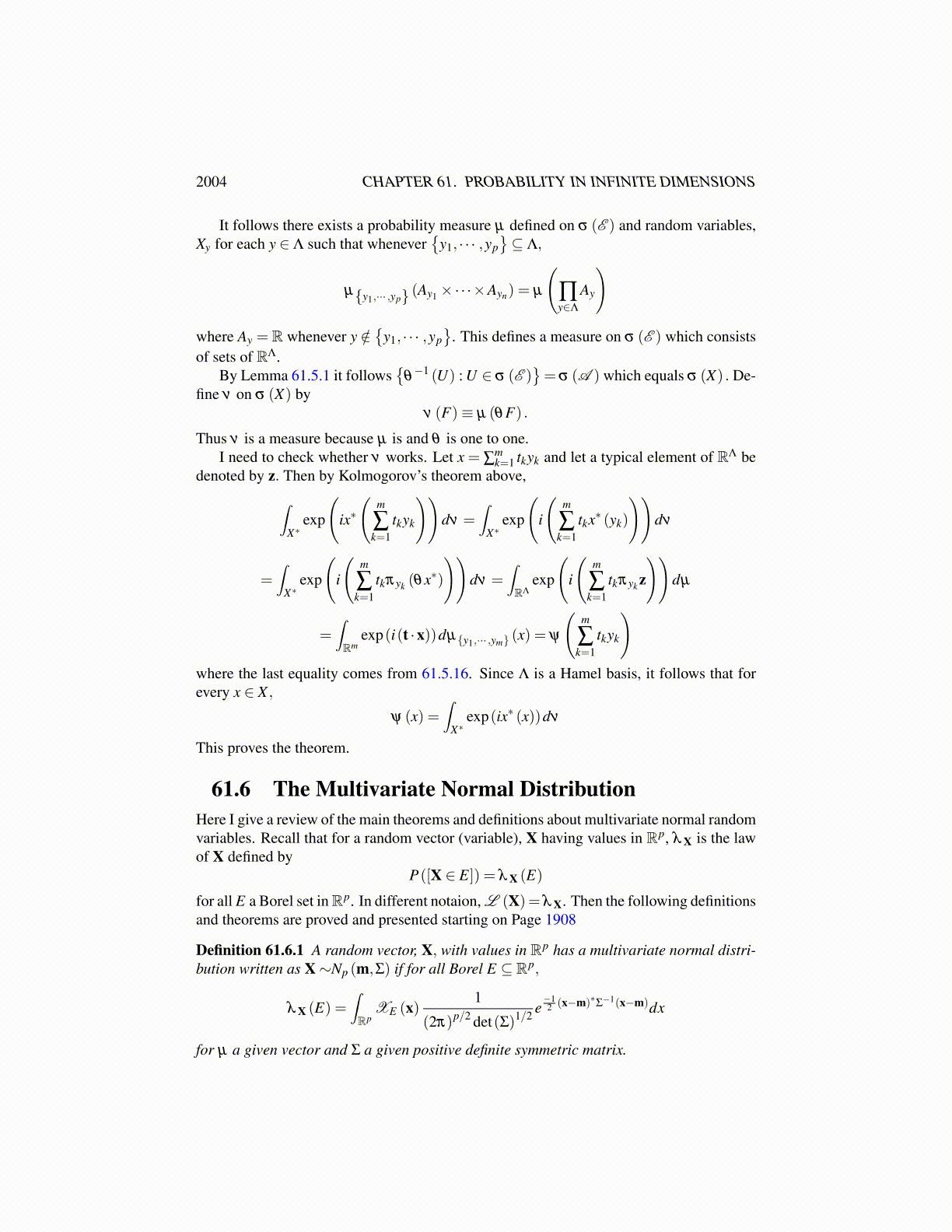
2004 CHAPTER 61. PROBABILITY IN INFINITE DIMENSIONS
thenν t1···tn (Ft1 ×·· ·×Ftn) = νs1···sp
(Gs1 ×·· ·×Gsp
)(61.5.13)
where if si = t j, then Gsi = Ft j and if si is not equal to any of the indices, tk, then Gsi = Msi .Then for E defined as in Definition 14.4.1, adjusted so that ±∞ never appears as anyendpoint of any interval, there exists a probability measure, P and a σ algebra F = σ (E )such that (
∏t∈I
Mt ,P,F
)is a probability space. Also there exist measurable functions, Xs : ∏t∈I Mt →Ms defined as
Xsx≡ xs
for each s ∈ I such that for each (t1 · · · tn)⊆ I,
ν t1···tn (Ft1 ×·· ·×Ftn) = P([Xt1 ∈ Ft1 ]∩·· ·∩ [Xtn ∈ Ftn ])
= P
((Xt1 , · · · ,Xtn) ∈
n
∏j=1
Ft j
)= P
(∏t∈I
Ft
)(61.5.14)
where Ft = Mt for every t /∈ {t1 · · · tn} and Fti is a Borel set. Also if f is a nonnegative
function of finitely many variables, xt1 , · · · ,xtn , measurable with respect to B(
∏nj=1 Mt j
),
then f is also measurable with respect to F and∫Mt1×···×Mtn
f (xt1 , · · · ,xtn)dν t1···tn
=∫
∏t∈I Mt
f (xt1 , · · · ,xtn)dP (61.5.15)
Theorem 61.5.4 Let X be a real vector space and let X∗ be the space of linear functionalsdefined on X. Also let ψ : X → C. Then ψ is a characteristic function if and only ifψ (0) = 1 and ψ is pseudo continuous at 0.
Proof: Suppose first ψ is a characteristic function as just described. I need to show itis positive definite and pseudo continuous. It is obvious ψ (0) = 1 in this case. Also
ψ
(∑k
akxk
)=∫
X∗exp
(ix∗(
∑k
akxk
))dµ (x∗)
and this is obviously a continuous function of a by the dominated convergence theorem. Itonly remains to verify the function is positive definite. However,
∑k, j
exp(ix∗ (xk− x j))αkα j = ∑k, j
eix∗(xk)αkeix∗(x j)α j ≥ 0
as in the earlier discussion of what it means to be positive definite given on Page 1940.